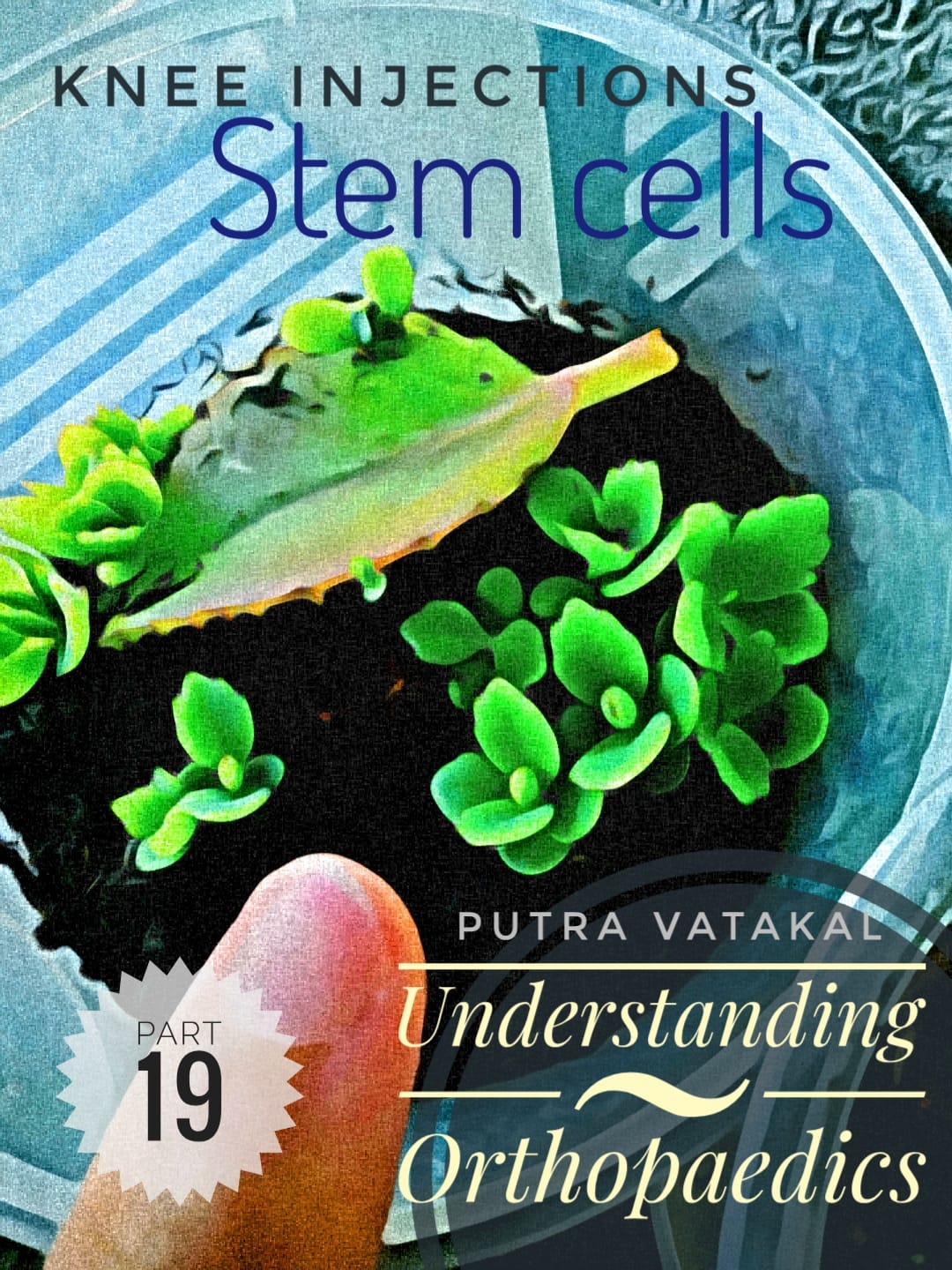
Immature.
Hardly a word you would like to be called. Far from something to get excited about.
But could immature cells… Stem cells… be the key that unlocks the door that lets incurable conditions like osteoarthritis out of our clinics (and lives)?
Perhaps I’m being a little dramatic.
Though very likely not as dramatic as the advertisements of ‘Cord Blood Stem-Cell Banks’ that seem to have mushroomed in recent years.
Make no mistake, I am all for scientific progress and I do my best to bring revolutionary (and proven) treatments to my own patients. But the reality is that while there are patients who have benefited from stem-cell therapy in various hospitals around the world, Malaysia included, this remains a type of treatment that is still under feverish research.
It would be irresponsible of me to claim otherwise.
With that disclaimer out of the way… Let’s learn something, at least.
You can think of stem cells as ‘baby cells’, not necessarily because they come from babies, but because – like babies – they can ‘grow up’ to be whatever they want to be.
This is no textbook on stem cells, but they can generally be divided into embryonic stem cells (this is the kind harvested from the umbilical cord blood of a newborn baby, which can mature into virtually any kind of human body cell… and stem cells that can be found in adults – these are called multipotent, which means they can mature into multiple types (within a certain limit) of adult human cells.
Adult stem cells can be found all around our bodies, but for treatment purposes they are usually harvested from places like bone marrow and fatty tissue, then cultured (grown in the lab) before being reinserted into the body where they are needed.
This can be life saving in some cases (e.g. a bone marrow transplant after chemotherapy in blood cancers like leukemia), and indeed, the more established stem cell treatments involve hematopoetic stem cells (those that mature into various types of blood cells).
When it comes to bones and joints, the Mesenchymal stem cell is what we look at. These are immature cells present in adults that can mature into cells that form our muscles, tendons, bones and other bodily structures.
Some research work has shown promising results in using mesenchymal stem cells to regrow damaged joint cartilage, but how this happens is still not fully understood.
Recent research papers mention something called the ‘hit and run’ mechanism, which does sound a little scary, but it simply means that introducing stem cells into an arthritic knee stimulates the patient’s body to send various healing factors into their knee, kickstarting the process of recovery.
I personally revisit the medical journals from time to time to catch up on the latest developments in this particular corner of medical research, and indeed, there may come a day when mesenchymal (or other) stem cells become standard treatment.
Do remind me to update this post when that happens ![]()
Originally written on 8 August 2020 in Quill Orthopaedic Specialist Centre, TTDI, Kuala Lumpur.